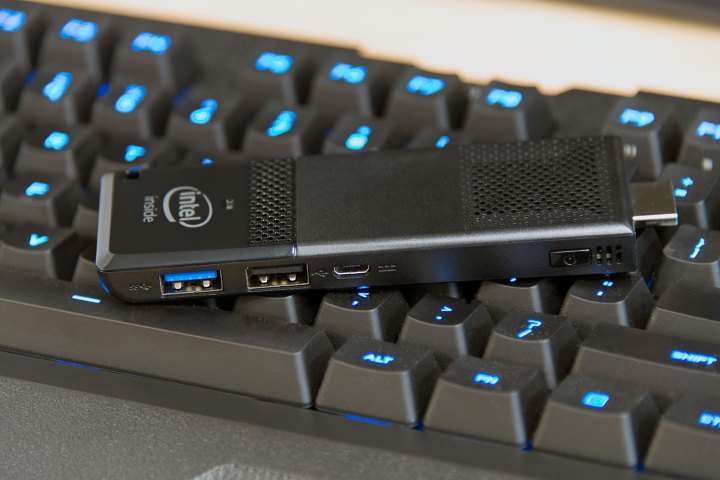
Paired up with that decent hardware offering is the big selling point of the system, the Core M3-6Y30 processor, which should offer much more powerful capable processing capabilities than any Compute Stick that has come before. Indeed. some early suggestions paint it as two to three times as capable as previous iterations. The Core M3-6Y30 is the same chip that come standard in the Asus Zenbook UX305.
Moving to Core M is a much needed upgrade. We like the idea of the Compute Stick, but in our past reviews we’ve always been forced to comment on each model’s extremely poor performance. Past Compute Sticks weren’t quick enough to make sense as an everyday PC or even a streaming media device, but this new model should be a different story.
This does also mean that it’s the most expensive Compute Stick yet, too. Without an operating system you can grab one from CDW for $317, but if you need a license for Windows 10 as well, expect to spend upwards of $385 with the likes of Amazon.
You could of course install an open source operating system, like one of the Linux distros, or the Chromium OS, as that wouldn’t cost you anything.
Regardless, the hardware also sports decent connectivity options, with the likes of one full size USB port on the stick itself and a pair of USB 3.0 ports on the power adapter, as well as support for Bluetooth 4.2 and 802.11ac wireless.
The biggest selling point of the whole thing will always be its size, though. Measuring in at just 4.5 inches long, the 13.4 ounce Compute Stick is one of the most compact computing solutions in the world. It will struggle to keep up with the likes of the more powerful NUCs, and systems using more traditional chips, but for what it offers, the Core M Compute Stick is a really impressive piece of kit.



